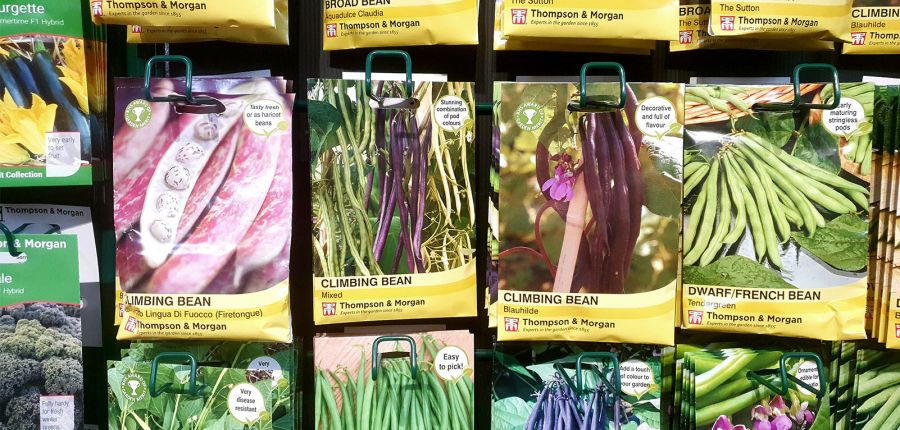Farewell brassicas – hello climbing beans
Posted By: rocket veg Category: Seasonal AdviceThe brassicas which I planted way back early last summer are nearing the end, caulis and cabbages picked some weeks ago, a few Brussels sprouts still to pick from their distorted stems, propped up by canes. My final crop will be purple sprouting broccoli, the eponymous spears beginning to form. Pigeons love brassicas – never more so than on cold days when ‘pickings’ are lean – so a covering of netting is pretty essential. These crafty birds will go to great lengths to get at the tasty treat, perching on top of netting and squashing it down so that they can reach through with their beaks, so lifting the netting on long canes with old plastic bottles on the ends should encourage the robbers to go elsewhere.
Dealing with old brassica stalks
Cabbage stems are amazingly tough. There’s even a variety named ‘Walking Stick’ which gives a good indication of the strength of the stem once cut and dried. If you put discarded brassica stems into the compost heap, thinking they’ll rot down and turn to wonderful compost, you’ll be in for a surprise when you dig them up almost intact a year later. Instead, give them a good bashing with an old hammer and crush as much of the woody material as possible before adding it to the compost bin.
Start a bean trench
Another (better?) use for bashed brassica stalks is to put them at the bottom of a bean trench. If you plan to grow climbing beans this season, now is the perfect time to prepare the area where you intend them to go, ready for sowing bean seed directly into open ground in May - or planting out strong little seedlings a week or two later when all risk of frost has passed. In order to thrive and produce a good crop, beans need rich, moisture-retentive soil, either by digging well-rotted manure into the soil, or creating what is termed a bean trench. Simply dig a trench approximately 60cm (24”) apart and 30cm (12”) deep, the length of your intended row of beans. As you dig, bank the soil up alongside the trench, then cover this will something to deter weed growth.
What to add to a bean trench
Climbing beans are thirsty plants needing copious amounts of water to produce juicy pods and fat seeds, so once my trench is dug, I follow the advice of experienced gardeners who line the base with a few layers of newspaper to help retain moisture, before adding new green waste which I would normally add to my compost bin. I also tip in leaves, grass clippings and comfrey leaves in due course, grass and comfrey both being great compost accelerants. Once your trench is filling up nicely, backfill with the soil you removed and allow the worms to get to work on the rotting matter under the ground, the heat from which will give the runner beans a real boost. My hens also contribute to both the bean trench and compost heap, their manure being a great source of nitrogen and their crushed egg shells adding calcium to the soil.
If you get a taste for digging and filling trenches, think about creating similar rich, moisture-retentive growing spots for other crops – such as pumpkins, squash and courgettes – which will replay all your hard work with wonderful crops!







